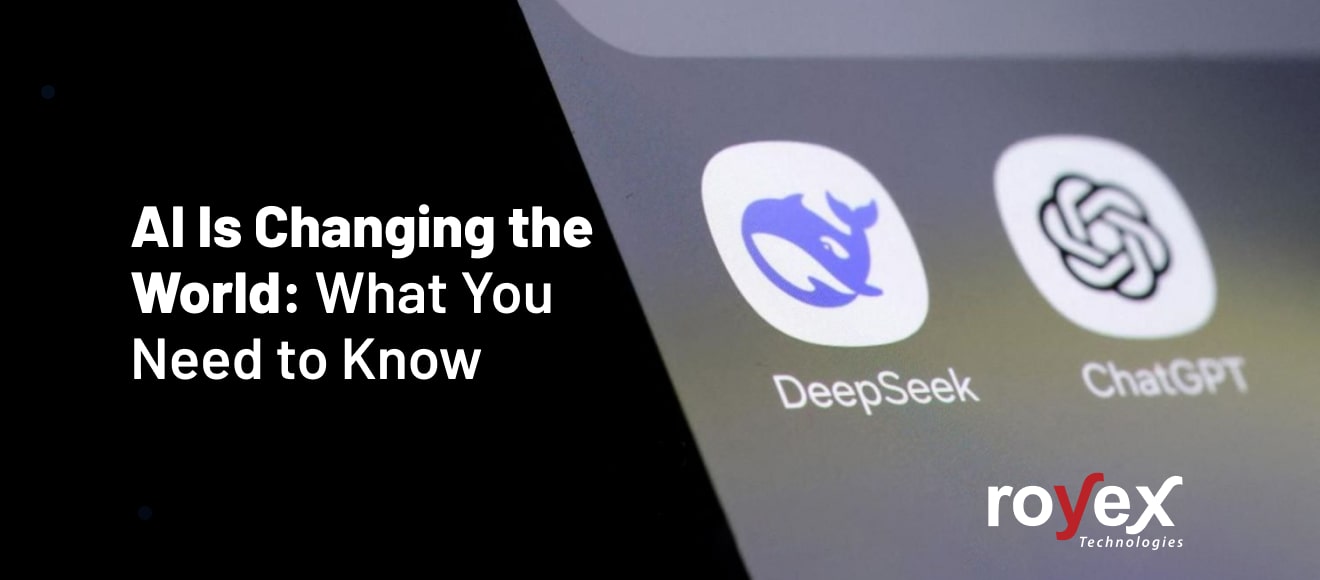
AI Is Changing the World: What You Need to Know
After ChatGPT became popular, a new tool called DeepSeek has grabbed a lot of attention. DeepSeek is a Chinese AI tool that released its latest version on January 20, 2025, and is already making headlines. DeepSeek says it works much faster than ChatGPT, using advanced computing chips to enhance its responses.
The impact of DeepSeek has been huge. In the US, a major tech company, Nvidia, lost $600 billion in just one day—this was the biggest one-day loss in US history. DeepSeek also shows that China is serious about becoming a leader in artificial intelligence (AI). The country wants to be ahead in AI, smart cars, advanced computer chips, and other high-tech industries.
But is DeepSeek really better than ChatGPT? Let’s take a closer look.
Why DeepSeek is Making Headlines

DeepSeek recently launched a new AI model called R1. Many experts and even government officials have praised it. The launch of R1 was so big that it caused tech stocks to drop in different countries.
One big reason DeepSeek is gaining popularity is that its R1 model is both powerful and affordable. The company says R1 works just as well—or even better—than OpenAI’s o1 model, but with lower costs. Because of this, DeepSeek’s free AI chatbot has become one of the most downloaded apps in many places.
Controversies and Concerns
However, not everyone is convinced by DeepSeek’s success. OpenAI has accused the company of copying its technology, saying there is proof that DeepSeek used OpenAI’s GPT models to train its own AI. This has led to debates about how DeepSeek developed its AI and what impact it will have in the future.
Some people believe DeepSeek’s AI shows that artificial general intelligence (AGI) is coming soon, but experts disagree. AGI is an AI that can think and work just like a human, and no company has achieved that yet. DeepSeek’s R1 is a big step forward, but it is not AGI.
Others argue that DeepSeek’s success proves US restrictions on AI technology exports are not working. The US government has banned the sale of advanced AI chips to China, which makes it harder for Chinese companies to build powerful AI models. DeepSeek had to find creative ways to improve its AI with older technology, but experts believe these restrictions still slow down China’s progress.
There was also concern that DeepSeek’s AI would hurt Nvidia, the company that makes the powerful chips needed for AI. When DeepSeek launched R1, Nvidia’s stock price dropped sharply, making investors nervous. But some experts, including Microsoft CEO Satya Nadella, believe DeepSeek’s success might actually increase demand for Nvidia’s chips in the long run.
Another debate is whether DeepSeek’s R1 is truly open-source. The company allows people to download and use the model for free, but it has not shared important details like the training data and full code. True open-source AI models give access to everything, so some experts say R1 is not fully open-source.
Privacy is another concern. Some people worry that because DeepSeek is a Chinese company, using its AI could be risky. However, DeepSeek says it stores user data on secure servers in China. Also, since R1 can run directly on personal devices, users do not have to send their data to DeepSeek’s servers. Companies like Perplexity are also hosting R1 in data centers outside China to give users more options.
Knowledge with Boundaries: The Real AI Challenge

In middle of all these developments, one big challenge in AI today is something experts call "knowledge boundaries." Unlike humans, who can use experience and intuition to handle uncertain situations, AI can only work with the data it has been trained on. This means AI often struggles with new or very specific topics.
For example, if an AI gives medical advice or explains a legal issue, it might sound correct based on general information. However, it could miss small but important details that a real doctor or lawyer would notice. The problem isn’t just that AI can be wrong—it’s that it can sound very confident while being wrong, which can be misleading.
Dr. Sameer Kulkarni, an AI ethics expert, warns, “Believing AI knows everything is dangerous. AI works well when there’s a lot of data, but in specialized areas, it can create a false or incomplete picture that confuses rather than helps.”
The Mechanisms Behind the Limits
To understand AI’s limits, we need to look at how it works. AI models, like transformers and GANs, learn from huge amounts of data. But no dataset is perfect or completely fair. These AI systems are built to perform well in areas similar to what they were trained on, but they struggle when faced with new or unfamiliar situations.
For example, AI can be great at writing stories or summarizing information. However, it may not have the deep understanding needed for complex topics like ethics, philosophy, or new scientific discoveries. Since AI relies on past data, it can miss new ideas or make mistakes when dealing with things outside its training.
Trust, But Verify: A Cautionary Tale
The implications of AI’s knowledge boundaries extend beyond academic debate—they have real-world consequences. In industries ranging from healthcare to finance, over-reliance on AI without human oversight can lead to significant errors. The lesson is clear: don’t blindly trust AI.
Every AI tool, no matter how advanced, must be viewed as an assistant rather than an infallible oracle. Users are urged to approach AI-generated information with a critical eye, verifying facts and consulting subject matter experts when necessary. After all, AI is a tool—a highly sophisticated one—but it is not the truth.
Looking Forward: Bridging the Gap
The future of AI research involves not only expanding the breadth of training data but also refining the algorithms that determine how that data is interpreted. Researchers are now exploring hybrid models that integrate human feedback directly into the learning process, aiming to narrow the gap between AI-generated outputs and expert human judgment.
Moreover, educational initiatives are emphasizing digital literacy, equipping users with the skills to critically evaluate AI recommendations. As policymakers and industry leaders work together to set standards for AI accountability and transparency, the message is clear: while AI can illuminate, it must not be the final arbiter of truth.
In conclusion, DeepSeek’s R1 model is a big achievement in AI, offering high-quality performance at a low cost. However, questions remain about how the company built its AI, the impact of US restrictions, and privacy concerns. While DeepSeek is an important player in AI, its success comes with challenges and debates that will continue in the future.




